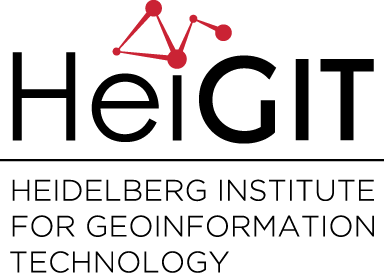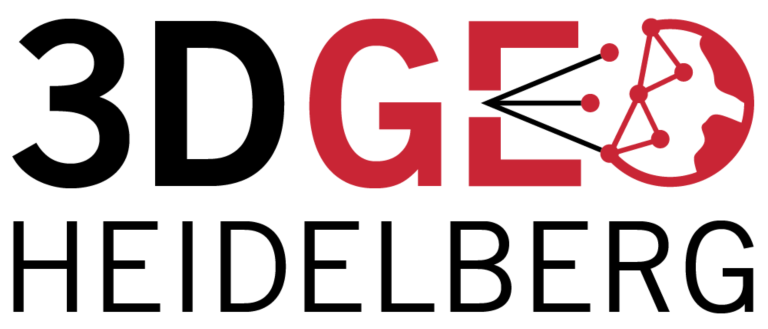Month: September 2020
-
Contiguous high resolution OSMlanduse map of the European Union by combining Copernicus data and OpenStreetMap
Find here a new update of the OSMlanduse.org map. By injecting known tags provided by OpenStreetMap (OSM) into a remote sensing feature space using deep learning, tags were predicted when absent thus creating a contiguous map – initially for the member states of the EU. By design our method can be applied when- and wherever…
-
Improved Isochrone Calculation released in openrouteservice v6.3.0
With the release of openrouteservice v6.3.0 at HeiGIT, we are presenting a new and improved speed-up technique that makes it possible to calculate much larger isochrones than with the existing algorithm. An isochrone is an area on the map that can be reached from a starting point within a time or distance limit specified by…
-
disastermappers on Tour – Mapathon im Verschwörhaus Ulm + virtuell
Über die letzten Jahre wurden von der OpenStreetMap Community in Ulm vermehrt Mapathons und Mappingaktionen veranstaltet. Am Donnerstag, den 1. Oktober 2020 ab 19:00 Uhr ist ein weiterer Mapathon des Ulmer OSM-Stammtisches geplant – mit Unterstützung von Melanie Eckle-Elze (disastermappers heidelberg und Geoinformation für Humanitäre Hilfe HeiGIT) und Katharina Lorenz (Deutsches Rotes Kreuz). Wir wollen im Rahmen des…
-
OSM completeness mapping for airborne situation assessment following an earthquake
As part of the LOKI project (Luftgestützte Observation Kritischer Infrastrukturen), a first test run of a newly launched OpenStreetMap (OSM) completeness mapping project in MapSwipe has been conducted yesterday. The aim of the LOKI project is to develop an interdisciplinary system that enables fast and reliable airborne situation assessments following an earthquake. The system will…
-
ohsome API v1.1 – changes and new functionalities
Recently we’ve had the first minor release 1.1 of the ohsome API, which brings several new features and upgrades. In the following lines we want to present to you the most important ones. Prior to 1.1, when you were requesting data through one of our data extraction endpoints, you would always get the geometries clipped…
-
SYSSIFOSS project video on the potential of synthetic LiDAR data in forestry applications
Do you want to find out about the potential of simulating LiDAR data over synthetic forest stands and the steps to get there? Get to know the SYSSIFOSS research project in the video below! Link to video In SYSSIFOSS we are using 3D LiDAR forest data to create a database of diverse model trees (different…
-
The future of working with OSM data
The open, flexible and collaborative nature as well as the benefits and advantages of OpenStreetMap (OSM) lead to the creation of a whole new ecosystem evolving around the project. They range from local and global communities of data and software developers to a large amount of tools and services like disaster response, routing, art etc.…
-
A Comprehensive Framework for Intrinsic OpenStreetMap Quality Analysis among Most Cited Paper in Transactions in GIS
We are happy to share that our paper “A Comprehensive Framework for Intrinsic OpenStreetMap Quality Analysis” (Barron, Neis, Zipf 2013) belongs to the top 5 most cited papers of the international journal “Transaction in GIS” (TGIS). Only recently we became aware of this. Thank you for considering this work. Certainly this paper influenced also our…
-
Disy integriert openrouteservice in Cadenza
Das Karlsruher Softwareunternehmen Disy Informationssysteme GmbH stellt die neue Version der Data-Analytics-, Reporting- und GIS-Plattform “Cadenza” vor. Die Erweiterung der Analytics-Funktionalitäten mit der Bereitstellung einer integrierten Routingfunktion und der POI-Suche sind zwei der wesentlichen Neuerungen. Realisiert wurde das Routing in Cadenza, in dem für die Streckenberechnungen eine Anbindung für den Openrouteservice (ORS), der von der…
-
Integration of Authoritative and Volunteered Geographic Information for updating Urban Mapping: Challenges and Potentials
A recently published paper provides a bibliometric review between integration of authoritative and volunteered geographic information (VGI) for the specific purpose of cartographic updating of urban mappings. The adopted methodology was through a bibliometric survey of the literature published by Web of Science and Science Direct. The period was evaluated from 2005 to 2020 and…


